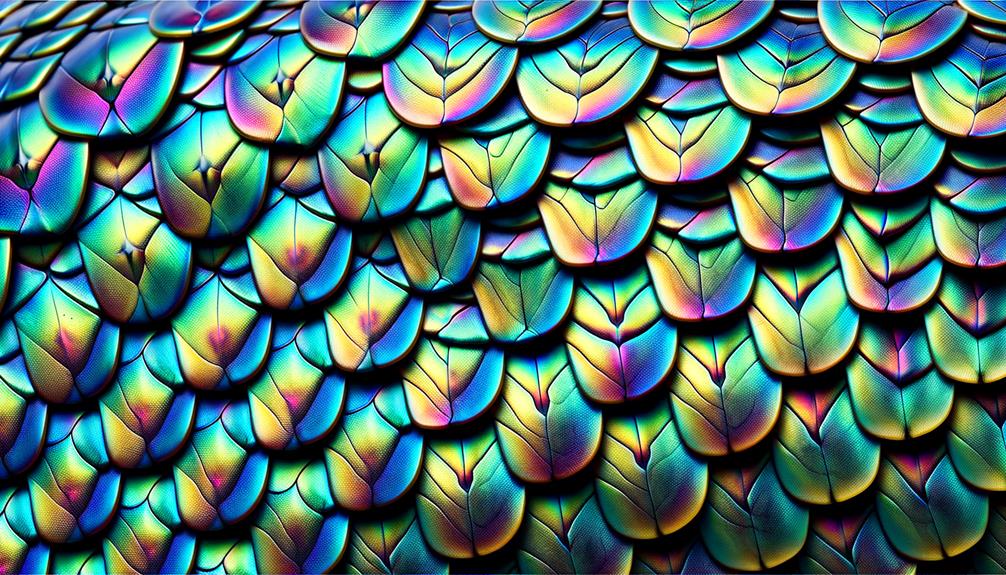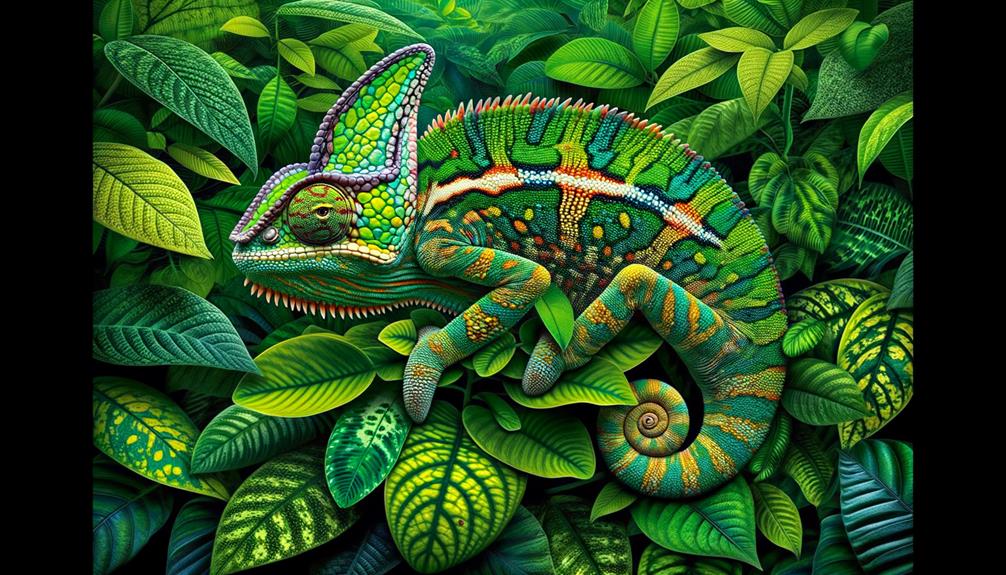I’ve always been fascinated by the immense size and unique adaptations of the world’s largest living reptiles. The Saltwater Crocodile takes the top spot, reaching lengths of up to 7 meters and boasting an incredibly powerful bite force. The Leatherback Sea Turtle is another remarkable creature, capable of diving to depths of over 1,200 meters thanks to its protective leathery shell. The Reticulated Python holds the record for the longest snake, while the Komodo Dragon, which can grow up to 3 meters in length, uses venomous bites to hunt its prey. The Green Anaconda, potentially the longest and heaviest snake, thrives in murky waters. Exploring their habitats and behaviors reveals even more astonishing facts.
Key Takeaways
The Saltwater Crocodile reaches an impressive 7 meters in length and weighs over 1,000 kg, making it the largest living reptile.
The Green Anaconda is a massive snake, with some specimens tipping the scales at 550 pounds and stretching up to 6 meters in length, earning it the title of heaviest reptile.
The Leatherback Sea Turtle is a giant of the ocean, growing up to 2 meters in length and sporting a flipper span of nearly 3 meters.
The Reticulated Python is the world’s longest snake, with some individuals stretching an astonishing 22.8 feet in length.
The Komodo Dragon is the largest living lizard, reaching lengths of up to 3 meters and weighing up to 90 kg.
Saltwater Crocodile
The saltwater crocodile is undoubtedly the largest living reptile on Earth, reaching lengths of up to 7 meters and weighing over 1,000 kg. For millions of years, these massive creatures have dominated the waters, showcasing their prowess as apex predators. Their enormous size and strength dwarf other reptilian giants, such as the Komodo dragon and the reticulated python.
What sets the saltwater crocodile apart is not just its size, but also its incredible power. With a bite force of 16,414 Newtons, the strongest of any living animal, it can take down almost any prey that crosses its path. This includes fish, birds, mammals, and occasionally, even humans. Its ability to travel long distances by sea allows it to inhabit a wide range of coastal regions in Southeast Asia and northern Australia.
Despite their fearsome nature, saltwater crocodiles face threats from hunting and habitat loss, making them vulnerable. It is crucial that we take immediate action to protect these magnificent reptiles and ensure their continued survival. Their existence is a testament to the incredible diversity and adaptability of life on Earth, and they remind us of the ancient, untamed world that still exists today.
Leatherback Sea Turtle
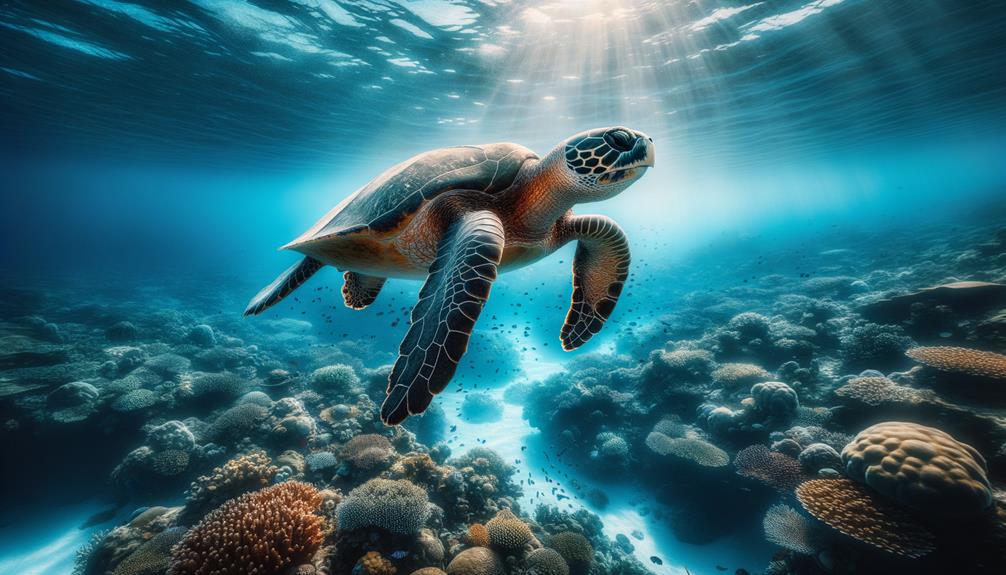
Among the ocean’s fascinating creatures, the leatherback sea turtle is a standout, fascinating scientists and marine enthusiasts with its unique adaptations and critical ecological role. Reaching lengths of over 2 meters (7 feet) and boasting a flipper span of nearly 3 meters (8 feet), it’s an astonishing sight in the marine world.
Unlike other turtles, the leatherback has a distinctive leathery carapace instead of a hard, bony shell, allowing it to dive to extreme depths of over 1,200 meters (4,000 feet) in search of its primary food source, jellyfish. As the fastest reptile on Earth, it can swim at impressive speeds of up to 35 km/h (22 mph), enabling long-distance oceanic journeys.
Unfortunately, these magnificent creatures’ populations have declined due to the collection of their eggs for human consumption, particularly in regions like Malaysia, Thailand, and parts of the Caribbean. Despite these challenges, leatherback sea turtles play a vital role in maintaining a balanced oceanic environment by controlling jellyfish populations. Their remarkable endurance and adaptability continue to inspire those who study and protect these oceanic giants.
Reticulated Python
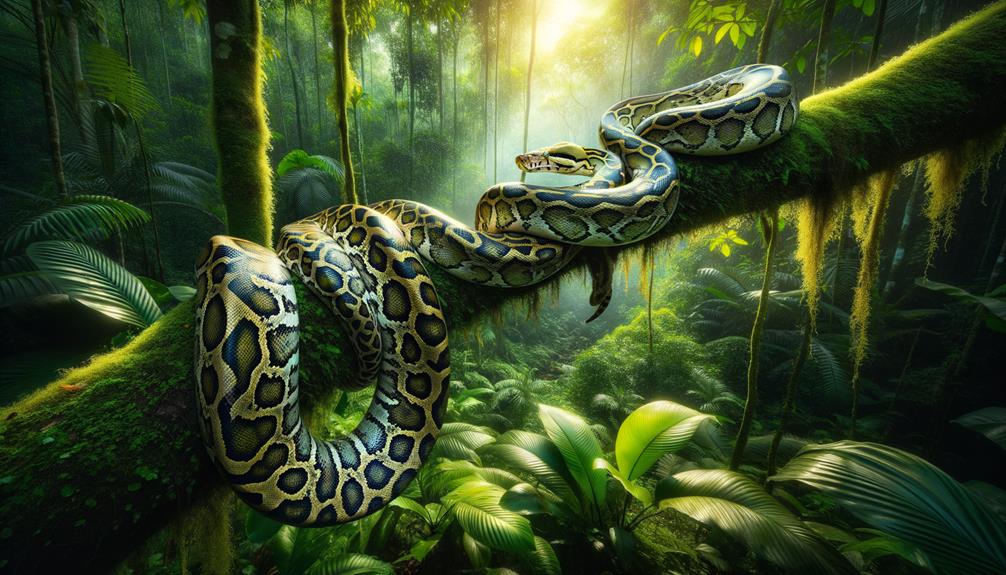
The reticulated python is the world’s longest snake, and its impressive length and formidable hunting skills fascinate herpetologists and wildlife enthusiasts alike. Found primarily in the Indo-Australian Archipelago, these snakes are skilled swimmers, allowing them to move easily between islands. While there are reports of larger green anacondas, the reticulated python remains the heavier of the two.
As expert hunters, these snakes have mastered the art of constricting their prey. They wrap their muscular bodies around their victims, suffocating them before swallowing them whole, showcasing their incredible jaw flexibility. Their prey includes a variety of animals, and there have been disturbing reports of them killing and consuming humans.
To give you a sense of their remarkable nature, consider the following:
- They can grow up to 22.8 feet in length, making them the longest snakes on record.
- They inhabit the islands of the Indo-Australian Archipelago, where their swimming skills come in handy.
- They are aggressive constrictors, expertly suffocating their prey.
- They can swallow their prey whole, thanks to their flexible jaws.
- They have a fearsome reputation, with reports of them killing and eating humans.
These characteristics make the reticulated python a remarkable and formidable creature.
Komodo Dragon
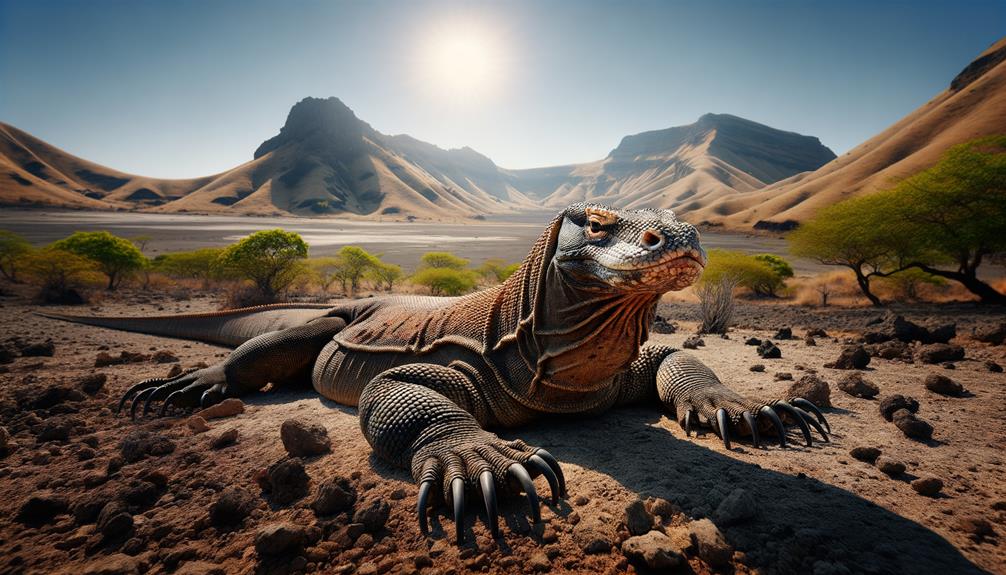
Komodo dragons are a sight to behold, with their massive size and formidable hunting skills. As the largest living lizard, they can grow up to 3 meters (10 feet) long and weigh as much as 90 kg (200 pounds). Native to the Indonesian islands of Komodo, Rinca, Flores, and Gili Motang, these carnivorous monitor lizards are skilled predators that prey on deer, pigs, and even humans.
Their arsenal includes venomous bites and sharp claws, which they use to subdue their prey. The infectious bacteria in their saliva can lead to fatal sepsis in their victims. What’s interesting is that Komodo dragons are solitary and territorial creatures. They have a keen sense of smell and can detect infrared radiation, allowing them to locate prey from a distance.
Unfortunately, these magnificent reptiles face significant threats. Habitat loss due to human encroachment and hunting has left them vulnerable. It’s crucial that we take action to protect their dwindling populations and preserve their natural habitats. By raising awareness and supporting conservation efforts, we can ensure the Komodo dragon’s continued reign as one of the world’s most iconic reptiles.
Green Anaconda
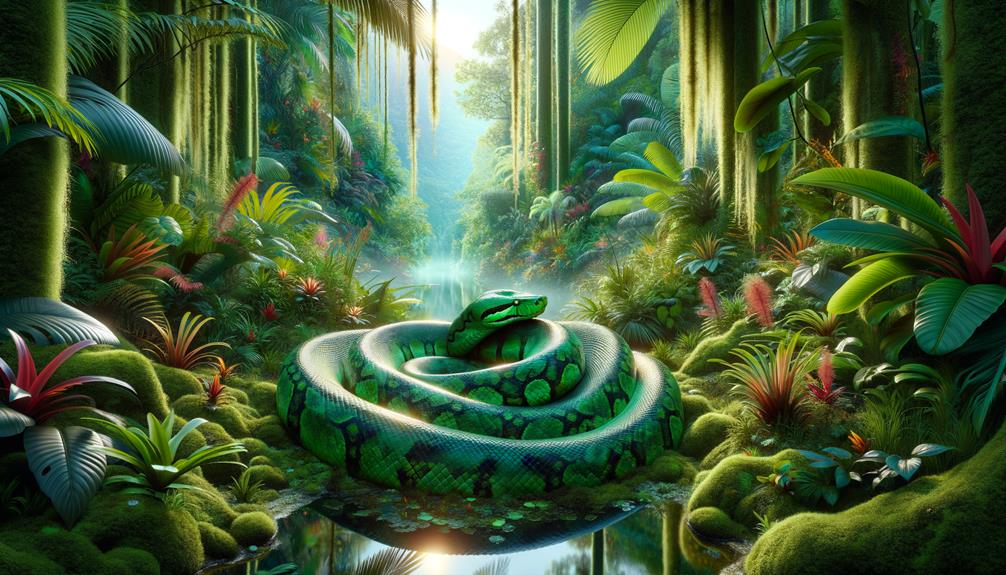
While exploring the dense, humid jungles of South America, you might stumble upon the green anaconda, a semi-aquatic giant known for its incredible size and powerful constriction abilities. The green anaconda, or Eunectes murinus, is potentially the longest snake in the world, with reports of individuals exceeding 6 meters (19.7 feet) in length. These serpents thrive in the tropical South American regions, particularly within the Amazon and Orinoco river basins.
The green anaconda boasts some remarkable traits:
- Massive Size: The heaviest snakes, with verified specimens weighing up to 550 pounds (250 kg).
- Semi-Aquatic Nature: Often found in swamps, marshes, and slow-moving streams.
- Formidable Constrictors: Capable of killing and consuming large prey such as deer, wild boar, and even jaguars.
- Camouflaged Skin: Olive-green with black blotches, perfect for blending into murky waters.
- Short Lifespan: Despite their immense size, they live only 10-20 years in the wild.
The green anaconda’s sheer size and strength embody the untamed spirit of the wild. As one of nature’s most awe-inspiring reptiles, it commands respect and evokes a sense of freedom inherent to the vast, untamed landscapes it inhabits.
Frequently Asked Questions
What Is the Largest Living Reptile on Earth?
Imagine a prehistoric giant lurking in modern waters – saltwater crocodiles are the largest living reptiles, stretching over 7 meters and weighing more than a ton. These massive predators dominate Southeast Asia and northern Australia’s coastlines.
What Are the Top 5 Largest Reptiles?
When it comes to the top 5 largest reptiles, my ranking would be: saltwater crocodile, Nile crocodile, leatherback sea turtle, green anaconda, and Komodo dragon. Each of these species stands out due to its massive size and unique adaptations that have allowed it to thrive.
What Is the Largest Group of Living Reptiles?
Crocodilians are an ancient and resilient group, thriving for over 200 million years. With their powerful jaws and adaptability, they’ve conquered diverse habitats, embodying a raw and unbridled strength.
Are Nile or Saltwater Crocs Bigger?
Saltwater crocodiles outsize Nile crocodiles. They can reach lengths of up to 7 meters and weigh up to 2,000 kg, whereas Nile crocodiles typically max out at around 6.5 meters and 1,090 kg.


